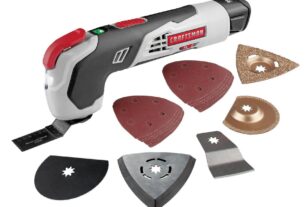If you’re a DIY enthusiast or a professional tradesman, chances are you have an awl tool in your toolbox. This simple yet versatile tool has been around for centuries and is still widely used today for a variety of tasks. In this article, we’ll explore the many different awl tool uses and show you how to get the most out of your awl.
What Is an Awl Tool?
An awl is a pointed tool with a sharp tip that is used for making holes in materials such as leather, wood, and metal. It consists of a handle and a pointed shaft that tapers to a fine point. The handle can be made from various materials such as wood, plastic, or metal.
Awls come in different shapes and sizes depending on their intended use. Some have a straight shaft while others are curved or angled. The size of the point also varies depending on the thickness of the material being worked on.
Awl Tool Uses
1. Leatherworking
One of the most common uses of an awl is in leatherworking. Leather is a tough material that requires special tools to work with. An awl is used to make small holes in the leather before stitching it together. This makes it easier to thread the needle through and ensures that the stitches are straight and even.
2. Woodworking
In woodworking, an awl is used to mark out holes before drilling them. It’s also used to start screws or nails in hard-to-reach places where a hammer can’t be used.
3. Metalworking
In metalworking, an awl is used to mark out lines on metal before cutting or shaping it. It’s also used to create pilot holes for screws or bolts.
4. Upholstery
An awl is also useful for upholstery work. It’s used to make small holes in fabric before attaching it to a frame or stuffing. This ensures that the fabric is stretched evenly and prevents wrinkles.
5. Paper Crafts
An awl can be used in paper crafts such as bookbinding and card making. It’s used to create small holes for stitching or lacing.
6. Jewelry Making
In jewelry making, an awl is used to create holes in metal for threading wire or string through. It’s also used to mark out patterns on metal before cutting or shaping it.
7. Shoemaking
Shoemakers use an awl to punch holes in leather before stitching it together. This ensures that the stitches are strong and even.
8. Bookbinding
In bookbinding, an awl is used to create small holes in paper before sewing it together. It’s also used to create decorative patterns on the cover of a book.
9. Gardening
An awl can be useful in gardening for creating small holes in soil for planting seeds or bulbs. It’s also useful for making holes in plastic plant pots for drainage.
10. Electronics
In electronics, an awl can be used to make small holes in plastic or metal cases for mounting components. It’s also useful for removing debris from small openings such as headphone jacks or charging ports.
How to Use an Awl Tool
Using an awl tool is relatively straightforward, but there are a few things to keep in mind:
1. Choose the Right Size and Shape
Make sure you choose the right size and shape of awl for the task at hand. A straight shaft is best for marking out lines, while a curved or angled shaft is better for making holes in tight spaces.
2. Use the Right Technique
When using an awl, hold it like a pencil with your fingers wrapped around the handle and your thumb resting on top of the shaft. Apply pressure to the tip of the awl and twist it back and forth to create a hole or mark.
3. Work Slowly and Carefully
Take your time when using an awl to avoid damaging the material you’re working on. Work slowly and carefully, applying gentle pressure until you achieve the desired result.
4. Keep the Awl Sharp
A dull awl is harder to use and can damage the material you’re working on. Sharpen your awl regularly using a sharpening stone or file.
Conclusion
An awl tool may seem like a simple tool, but it has many different uses in various trades. Whether you’re a leatherworker, woodworker, metalworker, or DIY enthusiast, an awl is an essential tool to have in your toolbox. By following these tips and techniques, you’ll be able to get the most out of your awl and complete your tasks with ease.
References:
https://en.wikipedia.org/wiki/Awl
https://www.hunker.com/13402530/how-to-use-an-awl-tool-for-punching-holes-in-leather
https://www.diynetwork.com/how-to/skills-and-know-how/tools/everything-you-need-to-know-about-awl-tools




